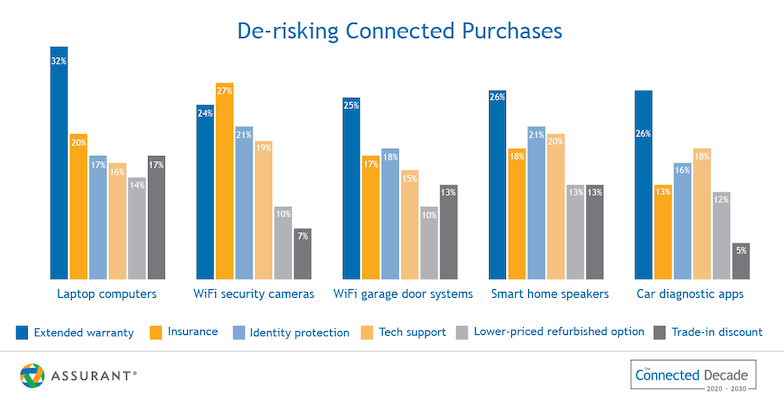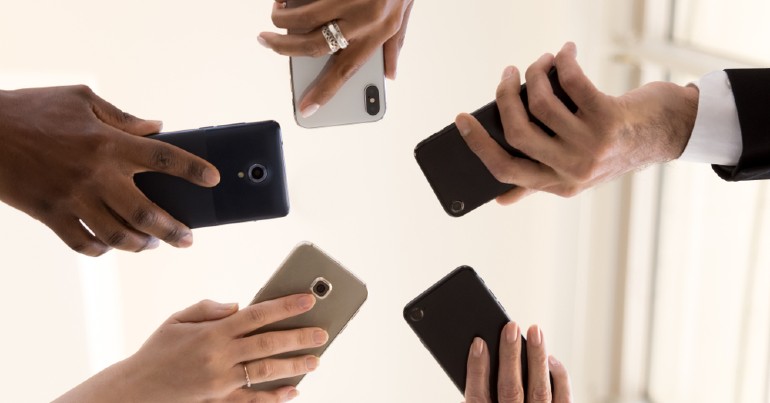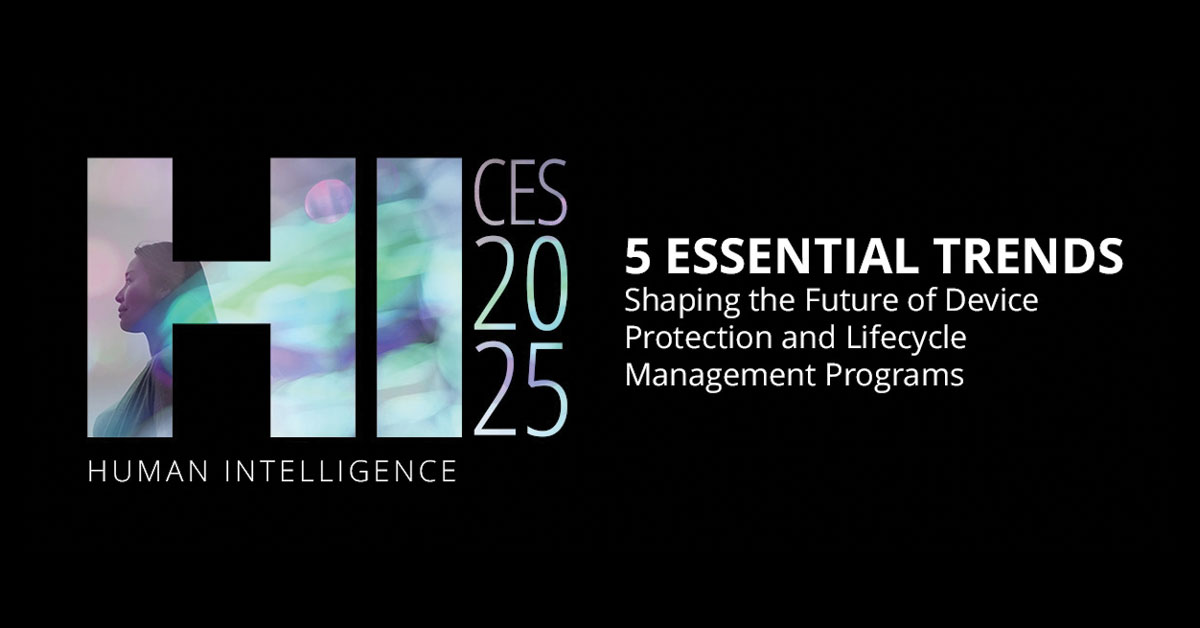There is a wide gap between consumer interest in a connected device and their follow through on the purchase. On average, only about a third consumers who say they intend to buy a connected product actually make the purchase.
According to Assurant's Connected Decade study, this reluctance to fully embrace smart devices, even when the desire to own one exists, is likely rooted in a general perception that connected technology is complex and beyond the ability of the average consumer to master. While this sounds like bad news for the connected world, companies that can optimize their sales processes to overcome this perception stand to gain significant increases in market share and brand loyalty.
Here’s the good news: The same study showed that a consumer who buys a smart device and connects it to his or her network is far likelier to repurchase, upgrade and expand their connected home.
That first purchase and the installation process around it are a critical opportunity for connected tech companies. Once installed, a connected device enters the consumer’s routine, building confidence, familiarity and dependence – and increasing repurchase intent. (For more information on initial and repurchase intent, read our article “The Domino Effect of Connected Products: Why the First Purchase is Critical to the Smart Ecosystem.”)
As a connected tech company, your challenge is de-risking the connected product purchase to help consumers increase their adoption of the entire smart ecosystem. Here are a couple consumer perceptions you’re up against.
Top 5 Consumer Concerns When Buying a Connected Product
5. Not Enough Help Troubleshooting
Almost half of all consumers will try to resolve issues by themselves and, when that fails, they turn to friends or family. If they still have issues, about 40% will turn to the manufacturer directly. Finally, if none of these options worked, a third of consumers may turn to FAQs or self-help sections of websites. However, when one solution is measured against the other, FAQ/self-help scores the lowest among consumers solutions, with more than 20% of consumers considering it a waste of time.
Resolution:
It’s clear that consumers, especially Utilitarians and Home Protectors, will seek out help from the path of least resistance in an effort to achieve quick resolutions. Focusing on providing well-trained, expert support from technicians is critical to helping consumers work through connected technology frustrations.
Multi-device support is becoming more of a differentiator than ever before as consumers find increasing value in the interoperability of the entire connected product ecosystem. The tech center at Assurant works through owner challenges not just on individual devices but across the entire connected ecosystem, offering better resolutions that result in higher customer satisfaction. In the near future, device interdependence will require a far more holistic approach to customer support.
4. Unsure How to Dispose of an Older Product
Over the last four years, nearly 20% of consumers have consistently said they’re unsure how to dispose of an older product. And, although they’re unsure of how to go about it, consumers are increasingly interested in recycling when it comes to product disposal. With the burgeoning purchase power of Gen Z and millennials, who tend to be Technophiles that are more environmentally aware and more inclined to buy connected devices, sustainability and cost effectiveness are both critical parts of the product disposal process.
These groups are still building wealth and are likely to be interested in sustainable ways to resell their devices prior to upgrading. Many devices may have an after-market value that consumers are completely unaware of. For those who are aware, there is a high sensitivity to getting the most value for their older device.
Resolution:
As we move through the decade, commitment to sustainability and the desire to reduce waste will continue to increase, presenting two strong, viable opportunities to create value for consumers: Trade-ins and lower-priced refurbished products. In most categories, these options reduce a buyer’s sense of risk by about 10%; that percentage is higher in some categories, like computers and gaming consoles, that have had a robust secondary market for years.
Mobile devices have benefited from strong trade-in and upgrade programs and have shown reliable growth. As one consumer trades in his or her mobile device in exchange for a discounted upgrade, another consumer, potentially in a different market, is able to access a lower-priced, refurbished option. This dynamic is driving the need for carriers to implement a disposition program with strong secondary market channels that deliver the best device value, allowing the carrier to create aggressive trade-in offers that are attractive to customers.
3. Worries the Product Will Break
While worry around a product breaking continues to be one of the top 5 consumer concerns, this fear has dropped a full 10% over a four-year period. But even with this drop, concern remains high with one fifth of consumers worried about breakage. As we move into a more connected ecosystem with more interoperability, a break in the chain can be even more frustrating, creating worry and caution.
Resolution:
Products will break, and, when they do, consumers consistently want a quick, inexpensive resolution. Over the same four-year period where we saw a decline in fears about product breakage, perception of repair and replacement remained steady, with about 10% of consumers feeling like they spent a lot or waited a long time for a repair.
A strong extended warranty can offer consumers the peace of mind that comes from knowing there is a solution in place for when a product is damaged or stops working.
2. Extended Warranty Is too Expensive
Like fear of breakage, consumers have been changing their mind about extended warranties. Just four years ago, more than a quarter of consumers felt they were too expensive. But last year, that number dropped below 20%, with 81% of consumers now believing the value of an extended warranty is worth the cost. Though still a barrier to entry, there is promise that extended warranties offer one of the best ways to de-risk a connected device purchase.
Resolution:
Simple, clear extended warranties that are well suited for the device and consumer lifestyle are consistently the best way to sooth consumer fears around a premium purchase. For example, Leisure Seekers, who are likely to own pricey entertainment systems, video game consoles and computers, want to make sure their entire ecosystem is protected. On average, an extended warranty can increase a consumer’s intent to buy by about 25%. In some categories, particularly computers, that number peaks to over 30%.
1. Last Product Didn’t Perform as Expected
This metric has become the greatest frustration among consumers surveyed (22%). Assurant’s Connected Decade research suggests that product performance disappointments stem from consumers being unclear about the benefits a product offers, not knowing how to install and set up the product or not having the right support to resolve an issue they experience. One major factor is likely the large number of smart products that aren’t connected to Wi-Fi. On average, one in three devices remain unconnected to the network, making it impossible for the owner to use the product as intended. And of those owners who didn’t connect, over a third simply didn’t know how.
All of this results in a lasting impression that connected (smart) devices are overrated, making it harder to recapture consumer enthusiasm and increase adoption across the smart ecosystem.
Resolution:
Helping new owners work through the product installation process and explaining the benefits along the way would resolve most of the dissatisfaction suffered by early adopters. In many cases, it’s highly likely that the products purchased do exactly what their owners expected, but owners simply don’t know how to make their purchases work.
Offering the right onboarding support to ensure that smart product purchases are connected to Wi-Fi and are able to fully function is critical to resolving this consumer concern.
It All Adds Up: Increase Smart Product Sales When You Address these Concerns
Each type of connected consumer has different needs when it comes to their connected purchases, but, at the end of the day, they’re all looking to you to decrease the risk associated with their purchase so they can feel confident in it.
In reducing the sense of risk of a connected purchase, all the support services (extended warranty, insurance, technical support, refurbish option and trade-in discount) contribute to a safer, more secure purchase. Almost all consumers (96%) express an intent to buy a connected device in the coming year. Of those consumers, 65% said they would be more likely to purchase if one or more of the support services were offered.

For brands to capture loyal consumers early, they must understand the attitudes consumers have toward these products and what’s driving slow adoption. By stacking up support services and de-risking the purchase, brands can gain a dramatic, competitive advantage, meeting consumers where they are.
To learn more about our product support and protection options that can help you de-risk consumer purchases and win market share, click here to get in touch.






